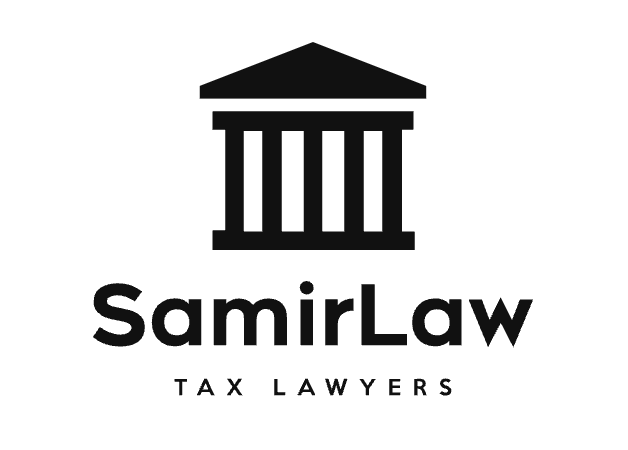Navigating the Renewal of the TIE: A Full Guide for UK Withdrawal Agreement Protected Residents

The Tarjeta de Identidad de Extranjero (TIE) serves as the crucial identity document for British nationals residing in Spain under the EU-UK Withdrawal Agreement (WA). Unlike standard residency permits, the TIE issued under Article 18.4 of the WA documents an existing, protected right of residence established before 1 January 2021.
As these initial TIEs reach their expiration dates, UK residents must undertake a meticulous renewal process. This administrative procedure is governed by Spain’s implementation guidelines, specifically ministerial Instrucciones published in the Boletín Oficial del Estado (BOE-A-2020-7276). It is essential to understand that this is primarily a renewal of documentation, confirming the ongoing exercise of the protected right, rather than a re-application for residency status itself. However, navigating the bureaucratic requirements, particularly concerning timing and the transition to permanent status, requires expert knowledge to ensure compliance and avoid unnecessary delays.
The Protected Status and the Imperative of Documentation Renewal
The TIE associated with the Withdrawal Agreement (TIE-AR) is the definitive proof of your status as a WA beneficiary. This status is often referred to as "declaratory," meaning the right to reside in Spain is maintained provided the qualifying conditions established before 31 December 2020 remain valid; the card simply documents that right.
The beneficiaries of the initial TIE-AR fell into two main groups :
- Group 1: Individuals who already held the old green EU residency certificate and subsequently exchanged it for the biometric TIE.
- Group 2: Individuals who applied fresh for residency, having been legally resident before the deadline, and received the TIE directly without holding the green paper stage.
The procedural path for renewal, especially when transitioning to long-term status, often depends on which group the applicant belonged to initially.
Navigating the Renewal Thresholds: Temporary vs. Permanent
The renewal strategy hinges entirely on the duration of continuous legal residency accrued in Spain.
- Temporary TIE Renewal (Under 5 Years): If the British national has not yet accumulated five years of continuous legal residence since their initial qualifying date, they will be applying for a renewal of their temporary TIE, which is typically valid for five years. This is generally a straightforward administrative renewal, focusing on maintaining documentation and continuous presence.
- Permanent TIE Application or Renewal (5+ Years): Once a British national has demonstrably surpassed the five-year continuous residency requirement, they automatically acquire the right to permanent residence under the Withdrawal Agreement. This permanent status is documented by a TIE valid for ten years.
The process of transitioning from temporary to permanent TIE-AR requires careful attention, as it is here that many applicants encounter their first substantive application hurdle since Brexit.
The Critical Pre-Application Phase: Timing, Appointment Scheduling, and Practical Realities
The greatest operational challenge in TIE renewal is securing the mandatory appointment (Cita Previa) for fingerprinting (Toma de Huellas) at the National Police station and managing the statutory versus practical timeline.
The Official Window vs. Operational Reality
Statutory Spanish immigration regulations permit the renewal process to begin up to 60 days before the expiration date of the current TIE.
However, administrative procedures often contradict this allowance. In practice, many National Police stations responsible for processing TIE renewals will strictly adhere to a policy of rejecting or refusing to process applications if the card has not reached its official expiration date. This common practice forces applicants to wait until the card is technically expired or apply on the exact date of expiration.
Given the persistent scarcity of appointments nationwide, this contradiction necessitates a calculated strategy: applicants must book the Cita Previa well in advance, specifically targeting a date that falls immediately after the card’s expiration date, allowing sufficient time to prepare all necessary paperwork.
Securing the Cita Previa Logistics
The renewal process formally begins with the appointment request via the Sede Electrónica de Administraciones Públicas (ICP Plus). Selection of the correct procedure code is paramount.
- Selection of Province and Procedure: After selecting the relevant province, the applicant must identify the correct procedure within the Cita Previa system.
- The Primary Category: The correct and specific procedure designation is: POLICÍA – EXP. TARJETA ASOCIADA AL ACUERDO DE RETIRADA (BREXIT).
- The Necessary Fallback: Should the specific Brexit category not be listed (a frequent regional issue in provinces with high demand or unique administrative protocols), the approved secondary option is: TOMA DE HUELLA – RENOVACIÓN DE TARJETA DE LARGA DURACIÓN.
It is important to acknowledge that regional administrative variations exist. For instance, in regions such as the Balearic Islands (Mallorca, Menorca, Eivissa) , appointment scarcity is notoriously high. In such cases, accessing appointments may require the assistance of specialized legal professionals who are often adhered to protocols established with local Bar Associations ( Colegio de Abogados) and the Oficina de Extranjería.
A critical consideration for clients is the administrative state between the card’s expiration and the appointment date. While the physical card is expired, the underlying right of residence remains legally protected by the Withdrawal Agreement.
During this "limbo" period, the applicant should carry both the expired TIE card and the official appointment confirmation (Justificante de Cita Previa), which serves as proof of a pending, continuous legal application.
The Two Renewal Paths: Temporary vs. Permanent Residency
The procedural route taken for renewal is dictated by whether the five-year continuous residency milestone has been met.
Renewal of Temporary TIE-AR (Under 5 Years of Residence)
For those not yet eligible for permanent residency, the process is streamlined and generally restricted to the police stage (fingerprinting). Since the underlying status is presumed continuous, the renewal focuses simply on the issuance of the new identity card. There is typically no requirement for a separate application to the Oficina de Extranjería, provided the applicant continues to meet the original conditions (e.g., employment, self-sufficiency, health coverage).
Transitioning to Permanent TIE-AR (5+ Years of Residence)
Upon accumulating five years of continuous legal residence, the UK national acquires the right to be documented as a permanent resident under the WA. This results in the issuance of a TIE valid for 10 years. The path to achieving this permanent documentation varies depending on the applicant's initial status :
- Applicants who previously held the EU Green Certificate: These individuals typically proceed directly to the police appointment (Toma de Huellas) using the EX-23 form to document their permanent status.
- Applicants who never held the EU Green Certificate: This group may face an additional procedural requirement. They may first need to file the Modelo EX-20 (Solicitud de Residencia Permanente de Ciudadano de la Unión Europea) with the Oficina de Extranjería. The formal application and review by Extranjería are necessary to receive a resolución favorable (favorable resolution) confirming the acquisition of permanent status. Only with this resolution in hand can the applicant proceed to request the police appointment for fingerprinting and TIE issuance.
The requirement to file the EX-20 introduces a layer of substantive administrative processing by the Extranjería before the TIE can be issued. This contrasts sharply with a simple TIE renewal, which is a police procedure. The EX-20 path may necessitate the presentation of comprehensive documentary proof of continuous legal presence over the full five-year period (such as aggregated padrón history, employment records, or tax filings) to substantiate the permanence claim.
Documentation: The Mandatory Checklist for the TIE Appointment
Rigorous preparation of documents is the most effective way to prevent rejection at the Cita Previa. Missing documents or incorrect form completion often lead to the application being refused, forcing the client to re-book a scarce appointment.
Required Forms and Proof of Payment
Applicants must present the following completed forms:
- Modelo EX-23 (Solicitud de Tarjeta): This is the application form specific to the TIE associated with the Withdrawal Agreement (Article 18.4). Critical instruction for completion mandates that the form be filled out A MÁQUINA (machine-typed) or written in MAYÚSCULAS (CAPITAL letters) using a BOLÍGRAFO NEGRO (black pen). Both the original and a copy of the completed form must be submitted.
- Tasa Modelo 790 Código 012: This is the official fee form for the expedition of the identity card. The form must be downloaded and filled from the official National Police website , selecting the correct fee category, paid at an authorized bank, and stamped by the bank as proof of payment.
Identity and Residency Verification Documents
In addition to the official forms, the following identification and residence documents are mandatory:
- Current TIE Card: The expiring original TIE card.
- Valid Passport: The original, valid UK passport, along with a photocopy of the biographical details page.
- Padrón Certificate: A Certificado o Volante de empadronamiento (registration certificate) must be submitted. This document is essential proof of current residency and must be dated within the last three (3) months.
- Photo: One recent, passport-sized photograph (32x26 mm format) with a white background.
- Cita Previa Confirmation: The printout of the appointment confirmation showing the Numero de Justificante de Cita.
Implicit Requirements: Health Coverage and Economic Means
The underlying right to residence under the Withdrawal Agreement is predicated on satisfying certain criteria regarding economic means and health insurance. While the police appointment for the TIE renewal is administrative (focused on identity documentation), not substantive (focused on financial assessment), applicants must maintain compliance with these requirements.
It is strongly advised that clients transitioning to permanent status, or those who anticipate regional administrative scrutiny, prepare documentation proving:
- Continued enrollment in the Spanish public health system (e.g., Seguridad Social or Convenio Especial) or possession of valid private health insurance.
- Sufficient economic means, generally demonstrated via recent tax declarations, pension statements, or proof of stable employment, especially if transitioning via the EX-20 process.
The Forms: EX-23 and Tasa 790-012
Administrative efficiency is maximized when forms are submitted flawlessly, adhering to precise legal specifications.
Completion Guide: Modelo EX-23 (Solicitud de Tarjeta)
The strict formatting requirements for the EX-23 must be observed without exception. The application requires the use of CAPITALS and black ink, and both the original and a copy must be presented.
A crucial section is DOMICILIO A EFECTOS DE NOTIFICACIONES (Address for Notification Purposes). The form offers the option to consent to electronic notifications (Dehú - Dirección electrónica habilitada Única).
Although electronic notification is not mandatory for all private individuals, utilizing this option is highly recommended. It significantly speeds up administrative communications compared to standard postal delivery, which can often be subject to substantial delays. To access communications via Dehú, the applicant must possess a valid digital certificate or the Cl@ve system. The utilization of electronic notification allows immediate access to the resolution concerning the TIE application, often enabling the client to schedule the subsequent card collection appointment much faster.
Tasa 790 Código 012: Payment Mechanics
The payment of the Tasa 790 Código 012 is a two-step process: filling out the form online and then presenting payment at a financial institution.
- Form Completion: The form must be completed electronically on the National Police website , selecting the correct procedure (TIE renewal).
- Printing and Payment: The completed form is printed, typically in triplicate. The applicant must then pay the specified fee at a collaborating bank. It is the bank’s responsibility to stamp all copies of the form, validating the payment. This validated receipt must be presented to the police during the Toma de Huellas appointment. An unstamped form is considered invalid and will result in the application being rejected immediately.
Post-Submission Procedures and Administrative Resolution
Once the documentation has been submitted, the process moves into the administrative and production phase, culminating in a second police visit.
The Two-Step Police Process: Fingerprinting and Collection
- Step 1: Toma de Huellas (Fingerprinting): This is the first appointment, where all documentation is verified, fingerprints are taken, and a digital photo is captured. Upon successful submission, the applicant receives a resguardo (receipt) containing a file or lot number, which serves as temporary proof of legal residency while the card is in production.
- Waiting Period: After fingerprinting, the physical TIE card is manufactured by the Fábrica Nacional de Moneda y Timbre. Waiting times are highly variable and regionally dependent.
- Step 2: Recogida de Tarjeta (Card Collection): Once the applicant has been notified (or has confirmed online, if applicable) that the card is ready, a second Cita Previa must be secured specifically for the procedure: POLICÍA – RECOGIDA DE TARJETA DE IDENTIDAD DE EXTRANJERO (TIE).
- Documentation for Collection: The applicant must present their valid passport and the original resguardo from the fingerprinting appointment.
Administrative Silence (Silencio Administrativo) and Legal Recourse
Residency administrative timelines in Spain are frequently protracted, and processes may exceed the statutory maximum period for resolution.
For applications regarding a protected right under the Withdrawal Agreement, the legal principle of Silencio Administrativo (Administrative Silence) is important. While the underlying right of residence is not lost due to administrative inaction, the lack of an explicit resolution prevents the physical issuance of the TIE.
If the resolution is unduly delayed, professional legal representation becomes necessary to enforce the client's rights. The strategy involves initiating formal written demands to the competent administrative body, urging an express resolution. If these demands fail to produce a result, the ultimate legal recourse is the recurso contencioso-administrativo (contentious-administrative appeal) before the courts, a structured process designed to compel the administration to act, though it may take up to a year to resolve.
Conclusion: Ensuring Legal Continuity and the Value of Expert Counsel
The renewal of the TIE for UK nationals protected under the Withdrawal Agreement is a crucial procedural step that validates their continued legal continuity in Spain. This process is fundamentally distinct from general residency applications because the core right is already established and protected.
The principal challenges reside in the administrative sphere:
- Timing: Navigating the conflict between the statutory 60-day early application window and the police’s operational rejection of applications before expiration.
- Procedure: Correctly identifying whether a simple police renewal is sufficient or if the complex, prerequisite application for permanent residency via the EX-20 form is necessary.
- Compliance: Ensuring rigorous adherence to the documentation requirements, including the three-month validity rule for the Padrón certificate and the specific formatting rules for the Modelo EX-23.
Given the prevailing bottlenecks in appointment scheduling (particularly in high-demand provinces) and the potential for rejection due to minor procedural errors, specialized legal counsel is invaluable. Expert assistance ensures the correct forms and fees are used, appointments are secured strategically, and potential delays associated with the transition to permanent status are proactively managed, mitigating the risk of administrative instability for the resident.
For personalized legal advice or assistance with your TIE renewal as a UK Withdrawal Agreement resident, contact us. Our team specializes in immigration and tax matters for international clients across Spain.






